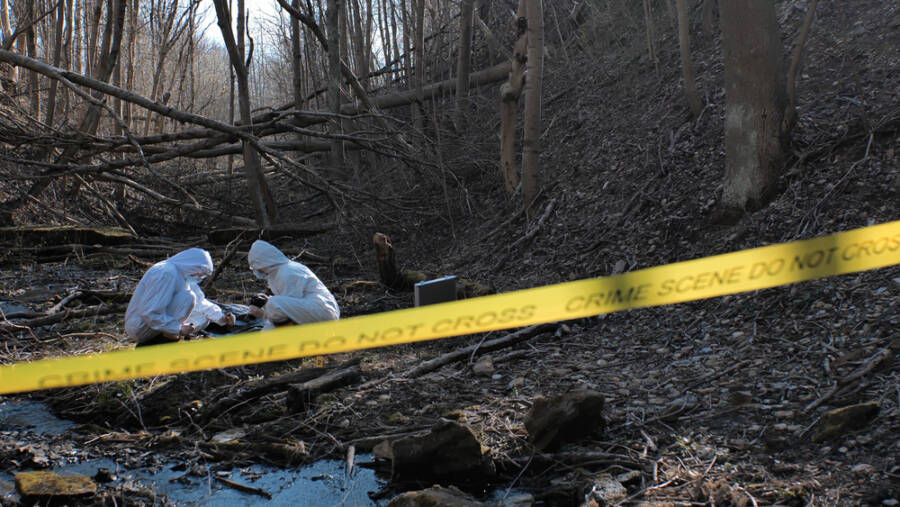8 Crucial Historical Parallels to George R.R. Martin’s Masterpiece
George R.R. Martin is one of the greatest writers in fantasy world-building, without a doubt. In fact, his work made thousands of fans to be more interested in the fictional worlds he created, rather than reality. But as the adventures of Jon Snow and Daenerys are definitely not real history homework, George R.R. Martin’s books “A Song of Ice and Fire” are actually based on actual events.
In fact, some of the best and most beloved characters in Game of Thrones are based on actual historical figures. Also, some of the most interesting battles are more or fewer remakes of ancient conflicts. So here are the events that inspired Martin to write this masterpiece!

The Starks and Lannisters are written after The War of Roses
All the “A Song of Ice and Fire” novels were inspired by one of the most important real-world conflicts: the famous wars of the Roses. That period was marked by civil unrest, and it spanned over three decades in the 15th century.
The conflict was initiated between two rival royal families, known as the Yorks and Lancasters, that were fighting for the throne of England. The parallels to the conflict written by Martin are pretty obvious, but luckily, we’re dealing with a great writer, so the similarities run much deeper than we might have thought. We’re talking about mad kings, heirs that are being spirited away, but also alliance-assuring marriages.
Joffrey Baratheon is portraying Edward of Lancaster
While a lot of characters in GOT are inspired by real historical figures, the entire character arc of the hatred of Joffrey Baratheon seems to be based completely on the life of Edward of Lancaster. The English prince was an important piece in the infamous War of the Roses, and the similarities between the two of them are hard to ignore.
Edward was born the son of King Henry VI and Queen Margaret of Anjou. The same as Joffrey, it seems that he might have been the result of an illicit affair the queen had. After he was driven into exile with his mother, because of the war, young Edward developed a similar passion to our character, Joffrey, where he enjoyed removing people’s heads and waging all sorts of vicious conflicts.
Ramsay Bolton’s favorite pastime is inspired by an ancient Assyrian leader
Ramsay’s method of torment was a well-known family tradition and one of the most disturbing details in the Game of Thrones storyline. Flaying and skinning your enemies might seem like something that’s been invented for a fantasy series, but in fact, it actually happened many times throughout history, especially during the Assyrian king Ashurbanipal.
After conquering a city that planned on leaving its empire, Ashurbanipal wanted to build a pillar at the city gate. He immediately had the rebel leaders flayed, using their skins to wallpaper the pillar, to show his people a little glimpse of his wrath. Ashurbanipal also had a couple of bodies impaled and put on display, which can be seen in Ramsay’s sadism, too.

The Wall sends to an Ancient Roman Counterpart in Hadrian’s Wall
The most well-known historical parallel in “A Song of Ice and Fire” is also the one that inspired the series. Back then, the Romans didn’t have the needed technology to build a towering wall of ice just as the one at the northern border of Westeros, so they built Hadrian’s Wall across 73 miles of northern Britain.
The Wall was supposed to keep out barbarians, just like the Wildlings were kept far away from the Westerosi. Hadrian’s Wall was supposed to stand as a marker of the Roman Empire’s upper limit. Even George R.R. Martin recalls how his first inklings of this story started with a visit to the well-known Hadrian’s Wall.
George R.R. Martin wrote The Red Wedding after two Grisly real-life events
I think we can agree on the fact that the Red Wedding is by far one of the most shocking moments in Game of Thrones. However, there are some fans, especially those who might have been familiar with their Scottish lore, that might have seen the tragical slaying of Catelyn and Robb Stark coming.
There are two direct links between the Red Wedding and European history. For example, the Glencoe Massacre had the same scale of carnage as the famous scene in the series. However, the fine details of this wedding can be traced all the way back to the 1440s Black Dinner. As the author mentioned, “the Red Wedding is solely based on a series of real events from Scottish history.
One was known as the Black Dinner. The king of Scotland was fighting back then with the Black Douglas clan. Then, he reached out for peace. He offered the young Earl of Douglas a safe passage. He then came to Edinburgh Castle and had an amazing feast.
The king’s men initiated pounding on a single drum at the end of the feast. They came with a covered plate that was set in front of the Earl, and it revealed the head of a black boar, which was seen as a dark omen. As soon as he saw it, he instantly knew what it meant.”
The Red Faith of R’hllor is very similar to Zoroastrianism
Even if Westeros is loaded with odd faiths, none are as controversial as the worship of R’hllor, which was practiced by Red Priests and Priestesses, such as Melissandre. While the worshipers of the Lord of Light might appear to be reading something out of a fantasy series, they were actually reading a lot from Zoroastrianism, which is one of the earliest monotheistic religions that ever existed in human history.
Both of these faiths are heavily focused on the importance of fire, and a deeper understanding of the universe. The real Zoroastrians had a hero figure who was meant to take the forces of evil in a climatic fight, but their God was named Ahura Mazda instead of Azor Ahai, which proves Martin didn’t copy absolutely everything.

The Braavosi are Venetians, really
The city of Bravoos is located across the sea from Westeros, but it still played a significant role in Game of Thrones. This is also the city where Arya learned the art of face-swapping and fighting. As you have probably noticed, the infrastructure of Bravoos is mainly made out of canals, which can only send us to the living city of Venice. However, there’s more than that. Braavos operates as an independent city-state, just like Venice.
If you remember well, the politics of Bravoos are mainly dominated by the Iron Bank and the Faceless men. Doesn’t ring a bell? Because Venice was ruled for centuries by a very similar group known as the Council of Ten.
The Ironborn were written after the Vikings of Westeros
The main conflict in the series is based on the 15th-century conflicts that took place in Europe, but it isn’t linked to any particular time period. This only allowed George R.R. Martin to mix history up a bit, combining together all sorts of historical concepts and figures that might have actually happened in different centuries.
The Ironborn is one of the best examples. As this culture is based completely around reaping and pillaging, the Ironborn are definitely inspired by the Vikings, even if the Norse sailed the seas many years before the Yorks and Lancasters started fighting.
What’s really amazing about this story is that Martin got the opportunity to mash together historical empires that never even clashed in real life.
If you enjoyed reading this article, we also recommend reading: 7 Weird Facts About Hygiene in Colonial America





